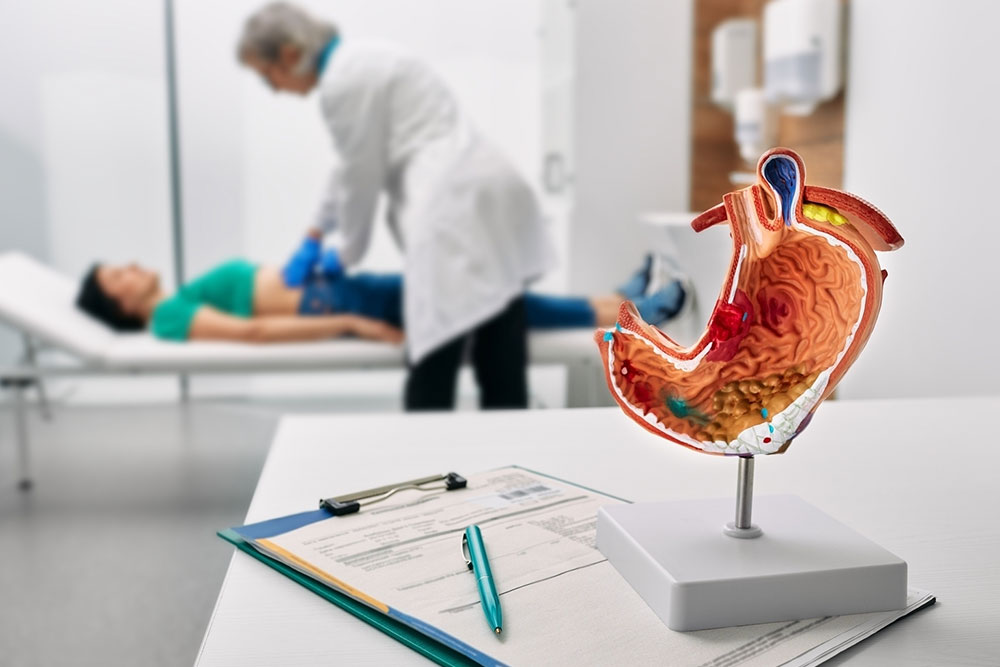Gastrointestinal stromal tumor – Symptoms and management options

A gastrointestinal stromal tumor (GIST) is a type of cancer that originates in the digestive system, usually in the small intestine and stomach. It results from the abnormal growth of cells that may develop into special types of nerve cells present in the walls of the digestive organs. GISTs may interfere with one’s digestive process and affect the movement of food through the body. Below are the symptoms and management options associated with this cancer.
Symptoms
Small GISTs usually do not cause any symptoms, grow slowly, and do not trigger any problems. However, as a GIST grows, it may trigger signs and symptoms in the concerned individual. While it can occur in individuals at any age, it is common in adults and rare in children. While the cause of most GISTs is yet to be determined, experts indicate a small number of cases are caused by genes passed from parents to children. A few common symptoms include:
– Growth that can be felt in the abdomen
– Nausea
– Dark-colored stools, which are triggered by bleeding in the digestive system
– Fatigue
– A feeling of fullness even after eating a small amount of food
– Abdominal pain
– Vomiting
– Cramping pain in the abdomen after eating
– The lack of hunger when one would normally expect to feel hungry
Treatment options
For an expert to recommend treatment options for GIST, one needs to undergo a thorough diagnosis. This might be required because other potential health complications could also trigger certain symptoms. Diagnostic methods may include imaging tests, an upper endoscopy, endoscopic ultrasound, a fine-needle aspiration biopsy, and laboratory tests on biopsies. Once the expert can determine the presence of GISTs, they may recommend various treatment options. One should also note that the goal of any treatment is to reduce the spread of the cancer. A few include:
Surgery
Surgery may help remove the GIST and is usually the first treatment for tumors that have not spread to other parts of the body. The type of surgery one undergoes may depend on the cancer. Surgeons can usually access the GIST with minimally invasive surgery.
Targeted therapy
Sometimes, the tumor may grow very large or entangle with nearby structures. In this case, one cannot undergo surgery and may require targeted therapy to manage the tumor. The treatment focuses on and blocks specific chemicals within cancer cells, forcing them to perish. Surgery might be recommended after this method to remove the remaining cancerous growth.
Radiation therapy
Radiation therapy uses powerful energy beams to eliminate cancer cells. The energy may come from sources such as X-rays and protons. It might be implemented before surgery to shrink a tumor, making it easier to remove, or during surgery, allowing more radiation to be delivered directly to the targeted area, which can spread healthy tissues around the target area. A healthcare professional may also use radiation therapy after surgery to remove any remaining cancerous cells.
Chemotherapy
During chemotherapy, one receives potent prescriptions to eliminate a GIST. These prescriptions are usually administered intravenously. Various types of gastrointestinal stromal tumors may respond better to chemotherapy in comparison to others.
Alternative options
A healthcare expert may also recommend alternative methods to complement ongoing treatments and improve one’s outlook.
Eating healthy foods, such as plenty of fruit and vegetables, may help manage one’s condition. One could also limit the consumption of unhealthy foods like processed and fried foods.
Regular physical activity for at least 30 minutes may offer many health benefits for those affected by GISTs.
Indulging in various relaxation techniques could help one bring down their stress levels, which is a crucial factor for those with cancer. Yoga, deep breathing, guided imagery, and acupuncture are a few ways one could manage stress.
Coping and support
A diagnosis of gastrointestinal stromal tumors can be overwhelming for anyone. Therefore, to cope with the condition and ongoing treatments, one could look into the following coping and support methods:
One could ask their healthcare team about the condition to learn more about it and discuss treatment options. The individual may become more confident about making decisions associated with treatments if they know more about the condition.
One could also speak to family, friends, or a professional, such as a social worker or counselor, about how they feel. Expressing oneself could help one better cope with their diagnosis.



